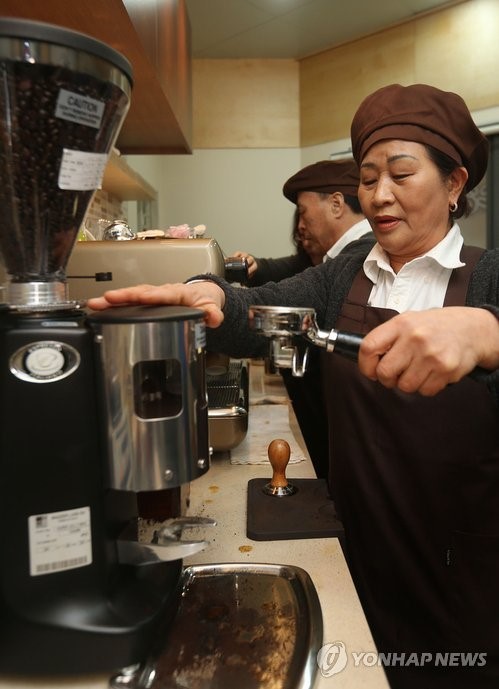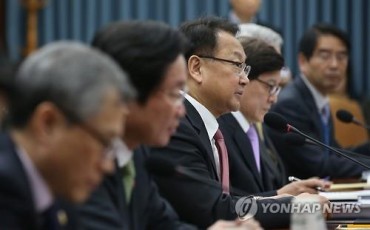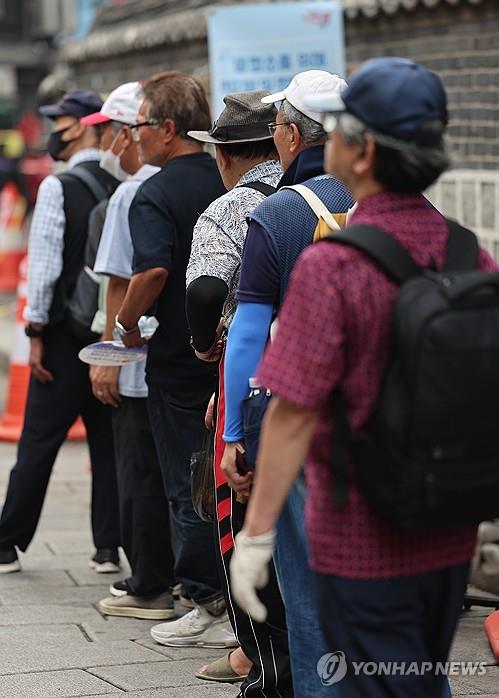
Senior citizens line up for free meals at Tapgol Park in Jongno-gu, Seoul, on July 11, as the number of residents aged 65 and over surpasses 10 million.
SEOUL, July 13 (Korea Bizwire) – South Korea is on the cusp of becoming a “super-aged society” as its population of residents 65 and older surpasses 10 million, a demographic milestone that will see one in five citizens classified as elderly.
According to data from the Ministry of the Interior and Safety, as of July 10, the number of registered residents aged 65 and above reached 10,000,062, accounting for 19.51% of the total population.
This figure is just 0.49 percentage points shy of the 20% threshold that defines a super-aged society, a benchmark South Korea is expected to reach by 2025.
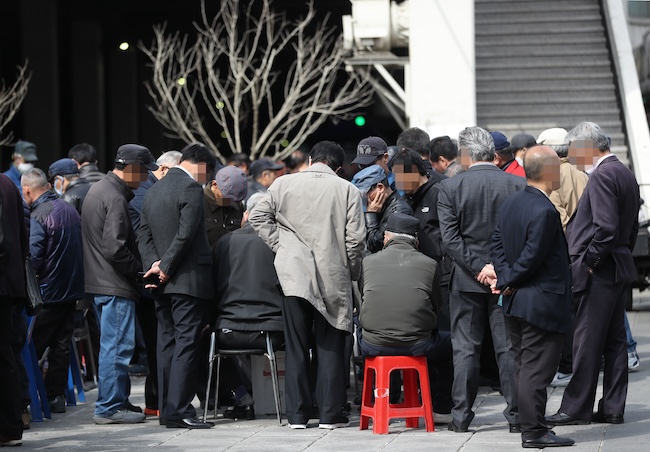
South Korea is on the cusp of becoming a “super-aged society” as its population of residents 65 and older surpasses 10 million. (Image courtesy of Yonhap)
The rapid aging of South Korea’s population, coupled with an unprecedented low birth rate, is raising alarms about the country’s economic future and prompting calls for comprehensive national measures to address the demographic shift.
This demographic transition has been swift. South Korea became an “aged society” — where the elderly make up 14% of the population — in 2017. Just eight years later, it is poised to enter the super-aged category, highlighting the accelerated pace of its demographic change.
The aging trend varies significantly by region. While metropolitan areas like Seoul (18.96%), Gyeonggi (16.09%), and Incheon (17.12%) are still some way from the super-aged threshold, rural provinces such as South Jeolla (26.67%), North Gyeongsang (25.35%), Gangwon (24.72%), and North Jeolla (24.68%) have already crossed into super-aged territory.
Projections suggest that by 2035, the elderly will comprise 30% of South Korea’s population, rising to 40% by 2050. This demographic shift is largely attributed to the aging of the baby boomer generation, born between 1955 and 1974.
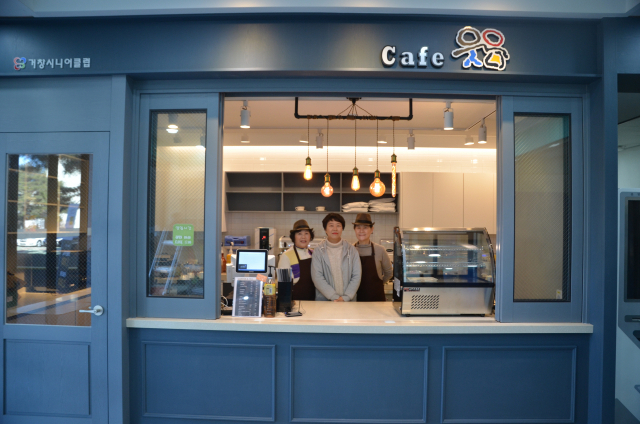
‘Useum’ (meaning laughter), a silver cafe with elderly baristas in Geochang, Gyeongsangnam-do, Korea (Image courtesy of Geochang Univ.)
This cohort consists of approximately 7.12 million first-generation baby boomers (born 1955-1963) and 9.54 million second-generation baby boomers (born 1964-1974).
The rapid aging of South Korean society is already foreshadowing various challenges. Some analysts project that by 2055, the national pension fund may be depleted as the number of pensioners outpaces contributors.
The aging population is also expected to strain the healthcare system due to increased medical expenses.
“The increase in the elderly population ultimately means an increase in the dependent population,” said Lee Samsik, director of the Institute of Aging Society at Hanyang University. “This translates to more people needing pensions and medical insurance, putting significant pressure on the national pension and health insurance systems.”
Lee added, “The decrease in the working-age population means we’re facing a ‘labor cliff.’ How to respond to this is emerging as a national challenge.”
To address these challenges, some experts suggest redefining the age at which a person is considered elderly. “We need to redefine what we consider ‘elderly,’ perhaps pushing it to 70-75 years old,” Lee said.
“Many people in this age group have the capacity to contribute to society and the economy based on their accumulated experience and skills. If we continue to make it so that the elderly don’t do anything, it’s not helpful for the country or for the elderly themselves.”
South Korea currently has the highest elderly poverty and suicide rates among OECD member countries, a situation that could worsen as the population ages further. Professor Koo Hye-young of Hanyang Cyber University emphasized the need for income security and tailored job opportunities for seniors.
“To lower the suicide rate among the elderly, we need to create an environment where they can feel a sense of purpose and pride. Volunteering is a good example,” Koo said. “If we help the elderly lead meaningful lives where they contribute to society and care for their neighbors, even in small ways, they will absolutely not commit suicide.”
As South Korea grapples with these demographic changes, experts also stress the importance of fostering intergenerational understanding and creating a society where young and old can coexist harmoniously.
This need for mutual understanding has been highlighted by recent incidents, such as a car accident caused by an elderly driver near Seoul City Hall that resulted in the deaths of nine people, which sparked online debates and ageist comments.
“To mitigate generational conflicts, we need to create a symbiotic society where younger and older generations consider and care for each other,” said professor Seok Jae-eun of Hallym University’s School of Social Welfare.
“It’s time for the elderly to think about how they can contribute productively to society and empathize with the concerns of the younger generation, showing wisdom as elders.”
M. H. Lee (mhlee@koreabizwire.com)


